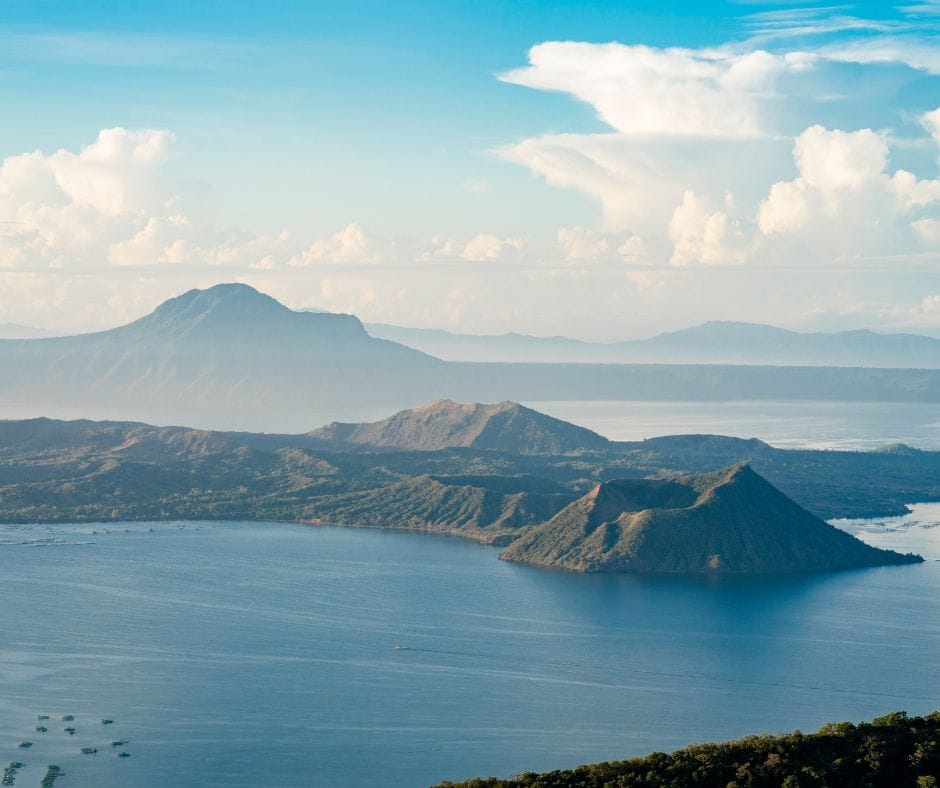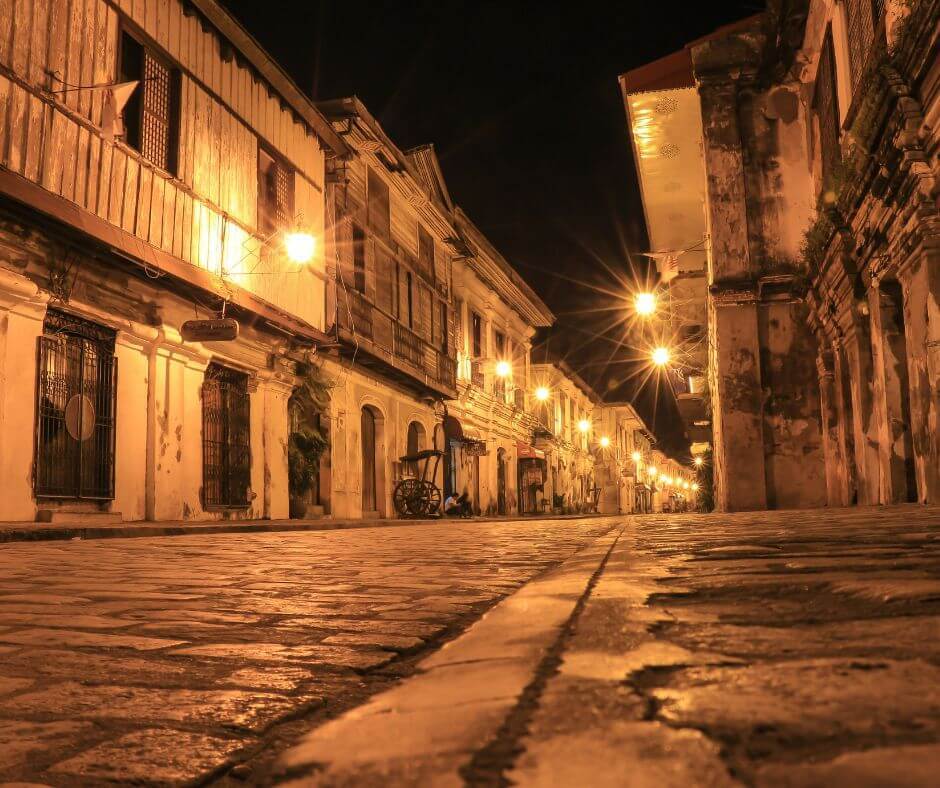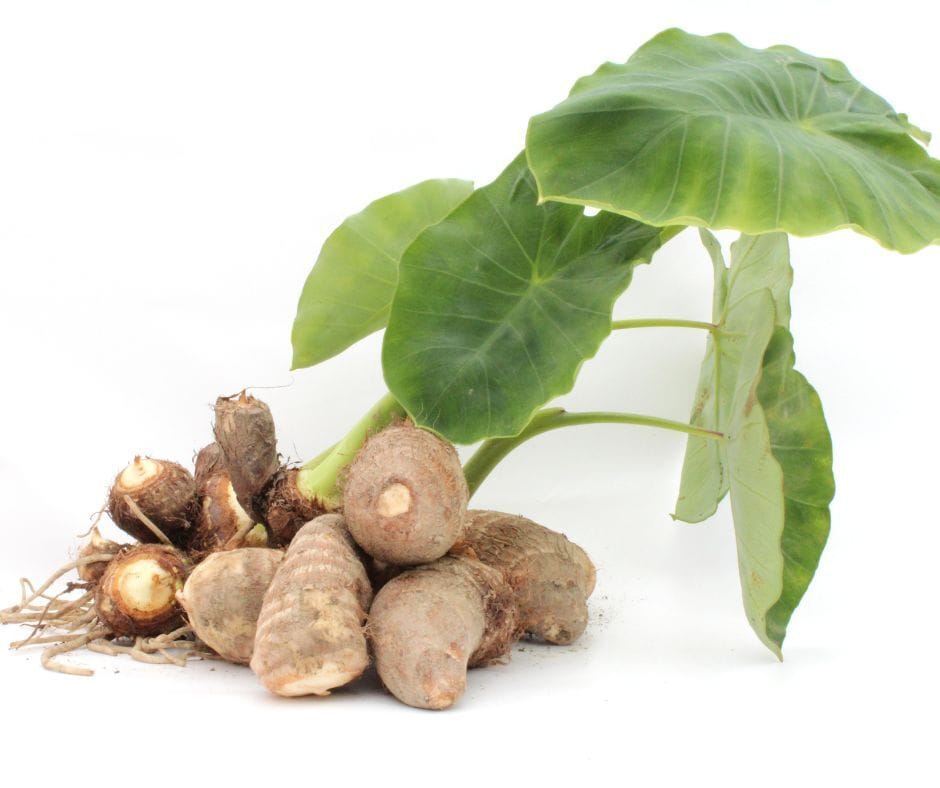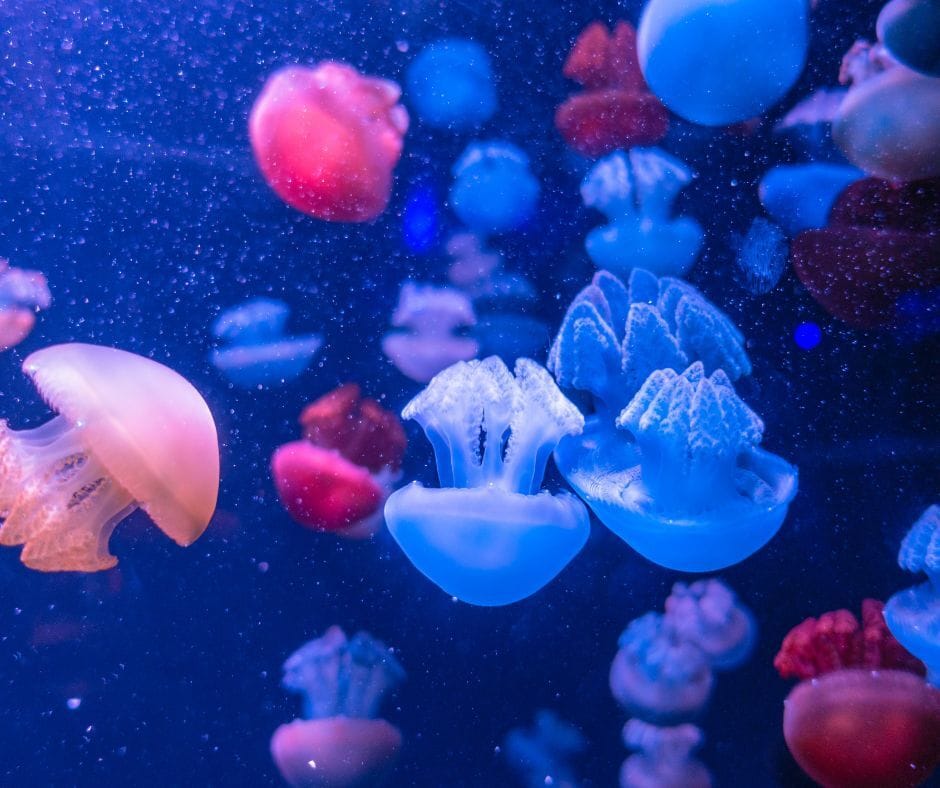- Finding Utopia Newsletter
- Posts
- Philippine Myths & Folklore — Stories That Shape the Islands
Philippine Myths & Folklore — Stories That Shape the Islands
Stories: Philippine Myths & Folklore — Stories That Shape the Islands; Vegetables of the Philippines — More Than Just Greens; Jellyfish in the Philippines — Floating Marvels and Menaces

Hello and Mabuhay!
Welcome to Finding Utopia — your trusted guide to exploring the wonders of the Philippines and beyond.
In this edition, we bring you inspiring stories and essential travel insights to fuel your next adventure:
Philippine Myths & Folklore — Stories That Shape the Islands
Vegetables of the Philippines — More Than Just Greens
Jellyfish in the Philippines — Floating Marvels and Menaces
Wherever you're dreaming of going next, we're here to guide you closer to your utopia.
Enjoy the read!
— The Finding Utopia Team
Philippine Myths & Folklore — Stories That Shape the Islands

When you listen to the rustle of palms, the rush of water, or the echo of footsteps on a old village trail—you're also hearing whispers of a rich mythic past. In the Philippines, myths and folklore aren’t just bedtime stories: they are living frameworks that explain nature, society, and identity. Our latest blog post, Philippine Myths & Folklore, explores how these narratives continue to colour life across the archipelago.
What Myths & Folklore Do
Creation & Cosmos-Making
Many Philippine myths address the question: “How did we come to be?” For example, creation narratives show how the sky, sea, land and people emerged from divine forces or elemental collisions.
These stories collapse into daily life: a mountain becomes a goddess, a river takes on soul, a tree shelters ancestral spirits.Nature, Spirits & Moral Lessons
Folkloric creatures populate rivers, forests and hearths: the dwarf-like Nuno sa Punso who dwells in termite mounds, the shape-shifting Aswang who lurks at dusk, or the sea-serpent Bakunawa that devours the moon.
Through these figures, myths teach respect for nature, caution in hubris, and the idea that unseen forces matter.Cultural Identity & Collective Memory
Folklore is a mirror of society. The tale of Kapre smoking under a tree, or the mischievous Tikbalang leading travellers astray, both reflect warning, humour and local wisdom.
These stories thread through family talks, community events, festivals, even in modern popular culture.
Why They Still Matter
Anchoring in a Fast-Changing World
Even as skyscrapers rise and internet beams flick obvious across islands, myths remind Filipinos of roots—of land, ancestors, hidden powers, and the importance of not forgetting.Tourism & Cultural Value
For travellers, encountering these tales adds depth—visiting a forest trail knowing it may be home to a diwata (forest spirit), or hearing a local refer to “tabi-tabi po” when passing under old trees. It changes the experience from sightseeing to story-living.Educational & Ethical Lessons
These myths also instruct: treat nature kindly, mind your neighbours, respect the past. A story about a girl turned into pineapple warns of laziness; a seabound dragon tale cautions against greed.
A Few Stories to Explore
Malakas and Maganda — the first man and woman emerging from bamboo (Tagalog myth).
The Bakunawa — a sea-serpent that devours the moon, explaining eclipses.
Nuno sa Punso — a spirit dwelling under ant hills; show respect or face consequences.
Aswang and Kapre — creatures of the night that embody fear, caution and folklore’s dark edge.
Bringing It Into Your Journey
Next time you wander a trail or sit by a quiet shore, pause to ask: What story lives here? Share a local myth over a meal, buy a book of folk tales, or simply listen. The past speaks—if we allow silence and curiosity.
Read the full post: Philippine Myths & Folklore
Learn AI in 5 minutes a day
What’s the secret to staying ahead of the curve in the world of AI? Information. Luckily, you can join 1,000,000+ early adopters reading The Rundown AI — the free newsletter that makes you smarter on AI with just a 5-minute read per day.
Vegetables of the Philippines — More Than Just Greens

In the Philippines, vegetables don’t play second fiddle—they carry weight, flavor, heritage and health in every meal. From the bitter bite of ampalaya to the creamy sweetness of kalabasa, the country’s bounty of greens, gourds and roots tells stories of soil, seasons and culture. Our latest feature explores how vegetables shape Filipino kitchens, and how their cultural and nutritional significance runs far deeper than a simple side dish.
Why These Vegetables Matter
Rooted in Soil and Season
The tropical climate, frequent rainfall and fertile plains of the Philippines create ideal growing conditions for everything from water spinach (kangkong) in lowlands to bitter melon (ampalaya) and sweet potatoes in upland gardens. The result? A near-year-round harvest of fresh produce and a strong connection between land and plate. (Source)Backyard Gardens & Everyday Resilience
Many Filipino homes maintain small patches of vegetables—malunggay (moringa), winged beans (sigarilyas), sweet potato leaves among them—ensuring families have access to nourishment even in lean times. This tradition speaks of resourcefulness, self-sufficiency and deep ties to the land. (Source)Flavors That Define Filipino Palates
Filipino cuisine thrives on balance—sweet, bitter, earthy, savory. Vegetables like ampalaya (bitter gourd), kalabasa (squash), sitaw (long beans), upo (bottle gourd) and pechay (bok choy) all play distinct roles in achieving that balance. (Source)
Key Vegetables to Know
Here are some staples that you’ll find in Filipino markets and kitchens, each with its own story:
Malunggay (Moringa leaves) — Dubbed the “miracle tree,” it’s packed with vitamins A & C, iron and calcium. Commonly used in soups like tinola and monggo, it stands for both health and heritage. (Source)
Kangkong (Water spinach) — A hollow-stemmed leafy green that absorbs flavors beautifully. Sautéed with garlic and soy sauce, it’s an easy favourite. (Source)
Ampalaya (Bitter gourd) — Loved or feared, its bitterness is cherished for balancing richer dishes and for its health benefits, such as aiding digestion. (Source)
Kalabasa (Squash / Sweet potato) — Vibrant orange, softly sweet and often simmered in coconut-milk stews or featured in vegetarian-friendly dishes. (Source)
Sitao (String beans) — Crunchy, mild, versatile—appears in regional dishes like pinakbet and kare-kare. (Source)
Upo (Bottle gourd) — Light, mild and adaptable: stir-fried, stewed or used in soups for a gentle texture that carries flavour. (Source)
Cooking, Culture & Conscious Eating
Philippine vegetable dishes transcend simplicity. Consider:
Stir-fries: Kangkong with oyster sauce, sitaw with ground pork and soy—a quick, flavour-packed routine.
Stews in coconut milk: Ginataang kalabasa, bamboo shoots in gata; richness meets vegetal comfort.
Mixed vegetable dishes: Pinakbet, dinengdeng—assemblages of bean, gourd, squash, leaf and more; regional identity in a pot. (Source)
Beyond flavor, these dishes highlight sustainable practices: using vines, leaves, blossoms; cooking “nose-to-stem” with little waste (Source). When you select fresh produce, store it well, and cook simply, you join a tradition of mindful eating.
Why This Matters to You
Whether you’re a traveller sampling local markets, a home cook exploring new greens, or someone eager to eat healthier—Philippine vegetables invite you into a deeper connection with the place. They remind us that food isn’t just fuel—it’s culture, community, memory.
Dive deeper into the full post: Vegetables of the Philippines – Nutritious, Flavorful and Culturally Rooted
Fact-based news without bias awaits. Make 1440 your choice today.
Overwhelmed by biased news? Cut through the clutter and get straight facts with your daily 1440 digest. From politics to sports, join millions who start their day informed.
Jellyfish in the Philippines — Floating Marvels and Menaces

Coastal waters in the Philippines hide more than sparkling turquoise waves and coral gardens — they also host a diverse array of jellyfish, creatures both mesmerizing and, in some cases, dangerous. Our latest blog post, “Jellyfish Found in the Philippines — Floating Marvels and Menaces”, dives into what these beings are, why they matter, and how to enjoy the sea wisely.
Marvels in Motion
Beauty in the Blue
Jellyfish drift through Philippine seas with translucent bells, trailing tentacles, and a surreal presence. Species like the common moon jelly (Aurelia aurita) are found near shorelines and estuaries, adding silent grace to shallow waters.Eco-Role & Nourishment
While swimming in beaches, you’re sharing space with creatures key to marine food chains. Jellyfish feed on plankton and small fish, and in turn help sustain turtles, sea birds and bigger marine life. Their presence reminds us of the intricate balance within ocean ecosystems.Scientific Discovery
Recent research highlights new species in Philippine waters — such as Cassiopea culionensis, which was discovered off Culion Bay. These finds underscore the archipelago’s role as a biodiversity hotspot and the many undiscovered stories floating beneath the surface.
Menaces to Mind
Deadly Doubles
Not all jellyfish are gentle. The box jellyfish group (class Cubozoa) — including Chironex yamaguchii — has been confirmed in Philippine waters and is highly venomous, capable of causing serious harm or death. For example:
“Box jellyfishes are widespread in Philippine waters… their tentacles can inflict extreme pain, cause skin injuries, and even trigger heart attacks.”Seasonal or Situational Risk
Jellyfish incidents in the Philippines tend to spike during certain seasons or after heavy rains, when currents wash them toward shore. Also, because many are nearly transparent, they can be difficult to see before contact — increasing the risk for swimmers.First Aid & Awareness
Knowledge matters. For mild stings (e.g., moon jellies), the effects might be limited to itching or rash. But when dealing with box jellyfish, rapid treatment is critical. Many local and tourist beachgoers are advised to wear protective swim gear, use vinegar on stings, and heed warnings posted by local authorities.
Your Guide to Safe Sea-Days
Check local advisories: Before heading into the water, ask locals or dive guides about recent jellyfish sightings.
Wear protective gear: Rash guards or thin wetsuits help reduce skin exposure.
Visible vs Invisible: Clear jellyfish are harder to spot — swim mindfully, avoid touching floating objects or blobs.
Sting first-aid: Rinse with vinegar, remove visible tentacles carefully, seek medical help for severe reactions.
Respect ecosystems: Jellyfish aren’t nuisances — they’re part of the marine tapestry. Observe, don’t provoke.
Jellyfish in the Philippines embody a subtle duality: the ethereal bloom of marine life and the tangible reminder of nature’s power. Whether you marvel at their drifting beauty or swim with informed caution, they add depth and dimension to any coastal adventure.

Tired of newsletters vanishing into Gmail’s promotion tab — or worse, being buried under ad spam?
Proton Mail keeps your subscriptions organized without tracking or filtering tricks. No hidden tabs. No data profiling. Just the content you signed up for, delivered where you can actually read it.
Built for privacy and clarity, Proton Mail is a better inbox for newsletter lovers and information seekers alike.







Reply